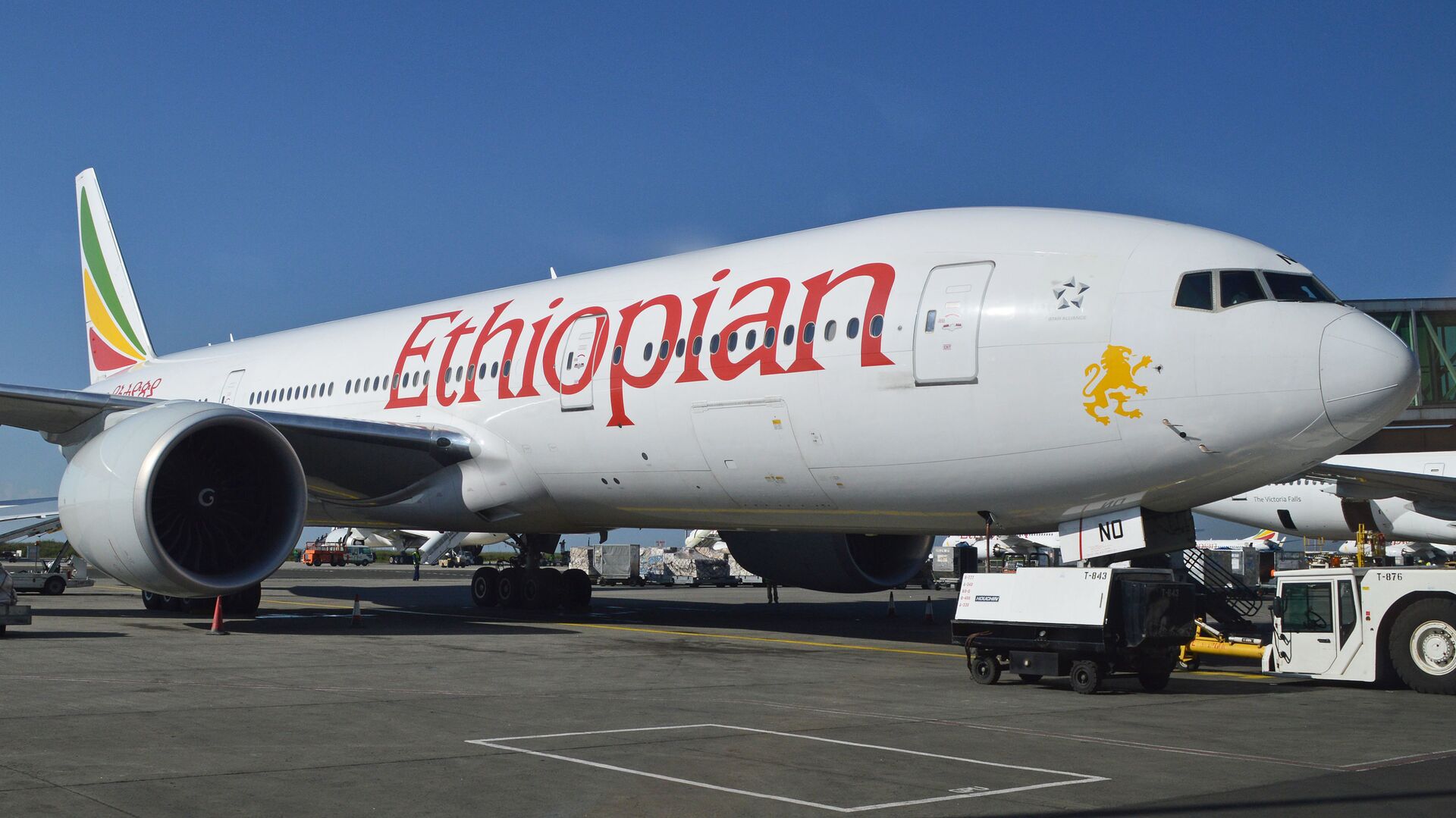https://en.sputniknews.africa/20230515/ethiopian-airlines-takes-steps-to-produce-sustainable-aviation-fuel-1059273980.html
Ethiopian Airlines Takes Steps to Produce Sustainable Aviation Fuel
Ethiopian Airlines Takes Steps to Produce Sustainable Aviation Fuel
Sputnik Africa
Sustainable aviation fuels (SAF) are defined by the International Civil Aviation Organization (ICAO) as renewable or waste-derived aviation fuels that has the greatest potential to reduce CO2 emissions from international aviation.
2023-05-15T16:55+0200
2023-05-15T16:55+0200
2023-05-15T16:55+0200
sub-saharan africa
ethiopia
east africa
plane
technology
https://cdn1.img.sputniknews.africa/img/07e4/07/16/1044141620_0:161:3071:1888_1920x0_80_0_0_21cb526715c2cbf53923d3d59906b430.jpg
Ethiopian Airlines is carrying out efforts to produce air-pollution-free aviation fuel, the chairman of the company's board of directors, Girma Wake, told local media.Wake expressed confidence that Ethiopian Airlines will succeed in meeting the International Civil Aviation Organization (ICAO) commitment to fly with zero emissions by 2050, as part of which a study on the local production of air pollution-free jet fuel has been conducted.The company's CEO Mesfin Tassew on his part added that the airline works closely with fuel supply companies and technology institutes to develop sustainable aviation fuel (SAF).In October 2022, Ethiopia was among the 184 member states of the ICAO that agreed to a long-term aspirational goal of net-zero carbon dioxide emissions from aviation by 2050.
ethiopia
east africa
Sputnik Africa
feedback@sputniknews.com
+74956456601
MIA „Rossiya Segodnya“
2023
Maxim Grishenkin
https://cdn1.img.sputniknews.africa/img/07e7/0a/17/1063018107_0:0:1104:1103_100x100_80_0_0_03090c85a11f5d2e8a19cf1d989443c9.jpg
Maxim Grishenkin
https://cdn1.img.sputniknews.africa/img/07e7/0a/17/1063018107_0:0:1104:1103_100x100_80_0_0_03090c85a11f5d2e8a19cf1d989443c9.jpg
News
en_EN
Sputnik Africa
feedback@sputniknews.com
+74956456601
MIA „Rossiya Segodnya“
Sputnik Africa
feedback@sputniknews.com
+74956456601
MIA „Rossiya Segodnya“
Maxim Grishenkin
https://cdn1.img.sputniknews.africa/img/07e7/0a/17/1063018107_0:0:1104:1103_100x100_80_0_0_03090c85a11f5d2e8a19cf1d989443c9.jpg
ethiopian airlines, sustainable aviation fuel, ethiopia to produce saf
ethiopian airlines, sustainable aviation fuel, ethiopia to produce saf
Ethiopian Airlines Takes Steps to Produce Sustainable Aviation Fuel
Sustainable aviation fuels (SAF) are defined by the International Civil Aviation Organization (ICAO) as renewable or waste-derived aviation fuels that meet sustainability criteria and have the greatest potential to reduce CO2 emissions from international aviation.
Ethiopian Airlines is carrying out efforts to produce air-pollution-free aviation fuel, the chairman of the company's board of directors, Girma Wake, told local media.
Wake expressed confidence that Ethiopian Airlines
will succeed in meeting the International Civil Aviation Organization (ICAO) commitment to fly with zero emissions by 2050, as part of which a study on the local production of air pollution-free jet fuel has been conducted.
"The study has been completed, and we want to expand it with relevant government and private stakeholders," the chairman said. "Hopefully, we will get there before 2050. The government is working on it. Boeing is helping us, Airbus is helping us, and so we believe we can do it."
The company's CEO Mesfin Tassew on his part added that the
airline works closely with fuel supply companies and technology institutes to develop sustainable aviation fuel (SAF).
"This SAF must be produced in a special way; the input is agricultural products. We need factories that will allow us to convert it into jet fuel, so we are talking with fuel suppliers and companies that have the technology, and we will find a way to produce this fuel in Ethiopia." Tassew remarked.
In October 2022, Ethiopia was among the 184 member states of the ICAO that agreed to a long-term aspirational goal of net-zero carbon dioxide emissions from aviation by 2050.


